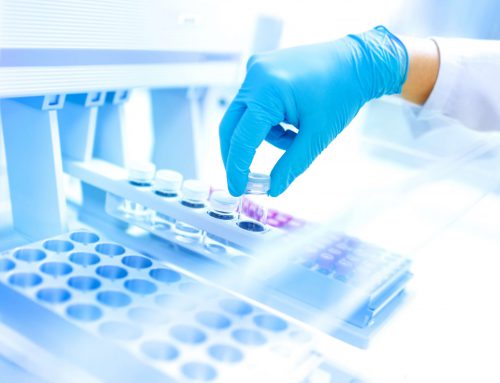Following the introduction of the MDR extension (EU Regulation 2023/607), there are many doubts that have arisen for manufacturers. The European Commission has therefore published a dossier of clarifications. Here are the main points.
On 03 March 2023, the Regulation (EU) 2023/607 was published which modifies the MDR and the IVDR as regards the transitional period of some medical devices. Following its introduction, several doubts emerged from the manufacturers. The European Commission has therefore published a dossier of 18 questions and answers (Q&A on practical aspects related to the implementation of Regulation (EU) 2023/607 – Extension of the MDR transitional period and removal of the “sell off” periods) to clarify the various issues. The areas subject to greater clarification are:
- extension of the MDR transitional period
- evidence of the requirements satisfaction for benefit from the extended MDR transition period
- conditions to be fulfilled to benefit from the extended MDR transition period
- surveillance performed by notified bodies
- deletion of the “sell-off” date
Medical devices that can benefit from the extended transitional period
They can benefit from the extension of the transitional period, the medical devices placed on the market after 26 May 2021 (date of application of the MDR)
- belonging to class I whose declaration of conformity has been issued with the MDD and whose conformity assessment according to the MDR requires the involvement of a notified body;
- with valid CE MDD/AIMDD certification.
In addition, they can benefit from:
- devices that have already been recertified: the legacy device and the corresponding MDR-compliant device can be placed on the market in parallel until the end of the related transitional period, provided that the MDD certification has not been withdrawn;
- legacy devices that the manufacturer does not intend to recertify under the MDR: their certification will be valid until 26 May 2024.
Class III custom-made implantable devices
Class III custom-made implantable devices can be placed on the market without the relevant certificate until 26 May 2026, provided that the manufacturer has lodged an application with a notified body for conformity assessment no later than 26 May 2024 and signed a written agreement with that notified body no later than 26 September 2024.
Extension of the transitional period for expired certificates
In the event that a certificate expired before 20 March 2023 (entry into force of the amending Regulation 2023/607) as long as it is not withdrawn, it will be considered valid until 31 December 2027 or 31 December 2028, depending on the case, only if:
- before the expiry date of the certificate, the manufacturer and a notified body have signed a written agreement for the conformity assessment of the device covered by the expired certificate or of a new device intended to replace it;
or
- a competent national authority has granted a derogation or has required the manufacturer to carry out the applicable conformity assessment procedure within a certain period of time.
Evidence of the requirements satisfaction for benefit from the extended MDR transition period
The extension of the transitional period and the concomitant extension of the certificate’s validity take place automatically by law. Whenever a manufacturer needs to demonstrate the validity of the certificate, for example in the case of procurement procedures, he has to provide:
- a self-declaration certifying the satisfaction of the requirements and indicating the expiry date of the transitional period;
- a confirmation letter issued by the notified body certifying receipt of the manufacturer’s application for conformity assessment and the conclusion of a written agreement.
In addition, the competent authorities should issue certificates of free sale for the duration of the extended validity of the certificate.
The European Commission will update its factsheets for competent authorities in non-EU/EEA countries, for healthcare professionals and healthcare institutions and for the procurement ecosystem, explaining how the extended transition period.
Elements necessary for the formal application for conformity assessment
The application for a conformity assessment request to a notified body must include:
- information useful for identifying the manufacturer and the devices to be evaluated, possibly also those that will replace a legacy device;
- the information necessary for the notified body to finalize the agreement;
- the elements listed in the conformity assessment referred to in Annexes IX to XI of the MDR;
- information enabling the notified body to verify the qualification of the products as devices, their respective classification and the chosen conformity assessment procedure;
- a schedule of the times, in agreement with the notified body, for the eventual supply of the technical documentation and any other pertinent information;
- documentation on the manufacturer’s QMS (Quality Management System);
To benefit from the extension of the transitional period, applications must be submitted by 26 May 2024 and an agreement signed between the manufacturer and the notified body by 26 September 2024. The conformity assessment activities must be completed by 2028.
Elements necessary for the finalization of the agreement between the manufacturer and the notified body
In order to take advantage of the extension of the transitional period, manufacturers will have to sign a contract with the notified body by 26 September 2024. The agreement, which is based on the formal request for certification presented by the manufacturer to the body, must include an indication of the timing for the submission of the documentation not provided at the time of submission of the application. An example of this is the complete technical documentation for all the devices covered by the formal application.
Further clarifications in this regard could be provided by NBCG-Med (Notified Bodies Coordination Group), in agreement with the MDCG NBO (Notified Bodies Oversight) working group.
“Device intended to substitute that device”
An insight was dedicated to the term “device intended to substitute that device” used in the MDR. With the indication of device intended to replace the previous device, the device is identified which, usually, differs from the previous one due to significant changes made to the design or purpose.
In this case, the transitional period is only applicable to the pre-existing device. The new device must undergo a full conformity assessment according to MDR before being placed on the market. After MDR certification of the replacement device, the legacy device and the replacement device can be placed on the market in parallel until the end of the relevant transitional period.
Surveillance performed by notified bodies
Some points of uncertainty regarding the surveillance activity performed by notified bodies have been clarified:
- the agreement for the transfer of surveillance from the notified body that issued the MDD/AIMDD certificate to the notified body that certifies according to the MDR must be signed by 26 September 2024. As long as there is no agreement or in any case until 26 September 2024 at the latest, the former body continues to be responsible for adequate oversight in relation to the applicable requirements relating to the devices it has certified;
- in the surveillance transfer agreement from the notified body that issued the certificate according to MDD/AIMDD to the notified body certifying according to MDR, the relevant documentation from the outgoing notified body to the incoming notified body should be included and should also contemplate the possibility for the MDR notified body to suspend or withdraw a certificate issued by the notified body under MDD/AIMDD where duly justified;
- the incoming notified body is not responsible for the conformity assessment activities carried out by the issuing notified body. Its surveillance is limited to surveillance under the MDR;
- on the labelling, including the CE marking, the number of the notified body which issued the certificate in accordance with the directive and which is still valid, may continue to be indicated. However, the manufacturer can modify the labeling of pre-existing devices by indicating the number of the notified body to which a formal application has been submitted under the MDR.
MDR extension, clarification on the deletion of the sell-off date
The sell-off date, that is the deadline for the further making available on the market of devices placed on he market in accordance with the previously applicable Directives, has been deleted.
Therefore:
- medical devices that have been placed on the market prior to 26 May 2021 in accordance with the MDD/AIMDD or after 26 May 2021 during the transitional period provided for in Article 120 MDR (i.e. until 31 December 2027 or 31 December 2028, as applicable) may continue to be made available on the market or put into service without any limitation in time without prejudice to the device’s possible shelf-life or expiry date.
- in vitro diagnostic medical devices that have been placed on the market prior to 26 May 2022 in accordance with the IVDD or after 26 May 2022 during the transitional period provided for in Article 110 IVDR (i.e. until 26 May 2025, 26 May 2026 or 26 May 2027, as applicable). Those IVD may continue to be made available on the market or put into service without any limitation in time without prejudice to the device’s possible shelf-life or expiry date.







